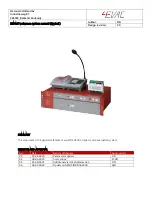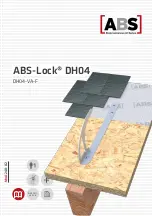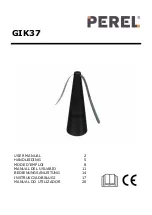
MODEL 1-8DEZ BLASTER
OPERATING MANUAL
SECTION 5
START-UP PROCEDURES & PRECAUTIONS
JUNE 2007
4.
If the cleaning is too severe or inadequate, adjust your travel speed
accordingly. A faster pace will result in a lighter surface profile while a
slower pace will be more aggressive and result in a deeper profile. If
irregular surfaces are encountered, adjust your speed accordingly (see
Section 8 - “Equipment Calibration”).
5.
The blast unit and the dust collector should be arranged so that the dust
collector is centrally located. Blasting in straight lines will always give the
best, most consistent results. Keep the dust hose situated between the
two units so that you never have to pass across it or the power cord.
Blasting during a turn will create an uneven profile. Once an area has
been cleaned, the blast unit and the dust collector can be moved to an
adjacent location to continue cleaning.
6.
The blast unit will clear small obstructions by pushing down
on the
steering handle. Caution should be observed when clearing obstructions
in this manner since the abrasive seal on the work surface may be broken.
This may allow high velocity abrasive to escape (see section 4.7).
7.
The blast pattern of the machine may change when the blast components
start to wear. The operator should always note the blast pattern during
normal cleaning and make adjustments or replace parts when necessary.
(See Section 6 and 9.)
8.
Check dust level in the dust collector at regular intervals while keeping
track of the number of feet traveled. This will establish a cleaning interval
for the dust collector.
5.3 SHUT DOWN
1. Close the abrasive valve by releasing the shot valve handle.
2. Turn the main power to OFF.
3. Turn dust collector off.
4. Be sure all rotating parts are fully stopped and the 1-8DEZ is in
“Maintenance Mode”, as described in section 2.3, before attempting to
inspect or maintain the blast unit or the dust collector.
Shot Blasting
30















































